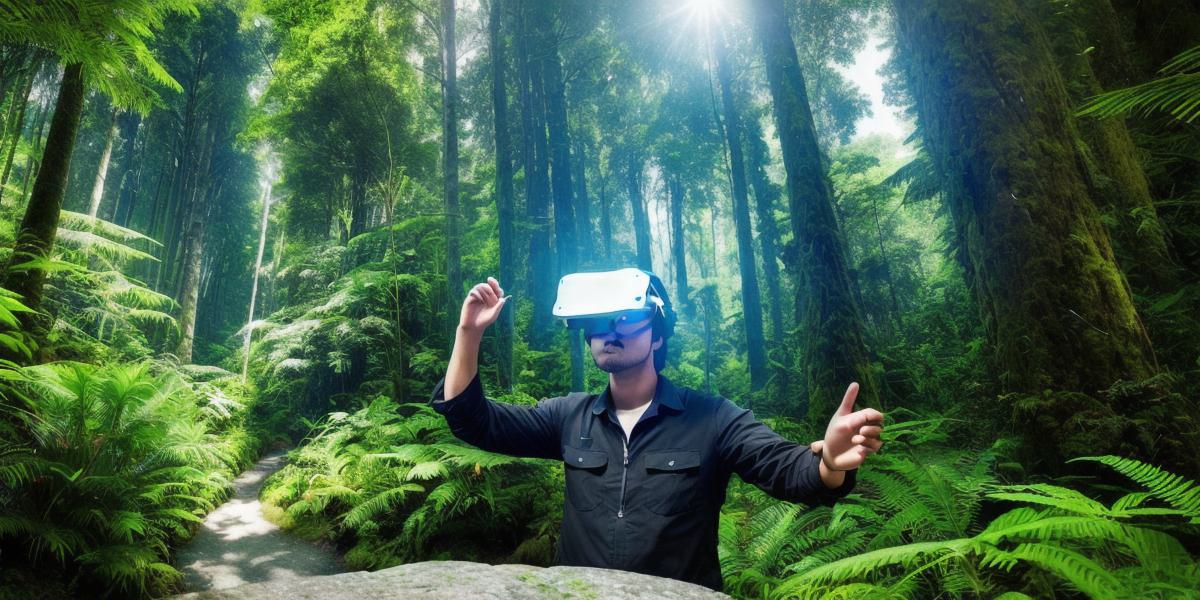As the world becomes increasingly digitized, virtual reality (VR) technology is quickly gaining traction as a powerful tool for immersing users in simulated environments. VR gaming systems are at the forefront of this movement, offering an unparalleled level of interaction and engagement that can transport users to entirely new worlds. In this article, we’ll explore the latest advancements in VR gaming technology and how they’re revolutionizing the way we experience reality.
Introduction: The Rise of Virtual Reality Gaming Systems
Virtual reality has come a long way since its inception in the 1960s. Today, high-end VR systems offer users a level of immersion that was previously unimaginable. With advancements in display technology, motion tracking, and haptic feedback, VR gaming systems are now capable of creating incredibly realistic simulations that can transport users to entirely new worlds.
One of the key drivers behind this technological revolution is the rise of mobile devices. With powerful processors and high-resolution displays, smartphones and tablets are now capable of delivering immersive VR experiences on the go. This has opened up a whole new world of possibilities for developers, who can now create games that are designed to be played anywhere, anytime.
The Ultimate Virtual Reality Gaming System: A Closer Look
At the heart of any VR gaming system is the display technology. There are two main types of VR displays: OLED and LCD. OLED displays offer superior color accuracy and deeper blacks, making them ideal for high-end gaming systems. LCD displays, on the other hand, are more cost-effective and offer a wider viewing angle, making them well-suited for mobile devices.
Motion tracking is another critical component of VR gaming systems. There are several different types of motion tracking technologies available, including optical, inertial, and ultrasonic. Optical motion tracking uses cameras to track the movement of users’ heads and bodies, while inertial motion tracking relies on sensors to detect changes in acceleration and rotation. Ultrasonic motion tracking uses sound waves to track movement, making it ideal for applications where optical or inertial tracking isn’t feasible.
Haptic feedback is the final piece of the puzzle when it comes to creating truly immersive VR experiences. Haptic feedback technology allows users to feel sensations in their bodies as if they were occurring in real life. This can range from simple vibrations to more complex tactile sensations, such as the sensation of water or fire on your skin.
Case Studies: Virtual Reality Gaming Systems in Action
One of the most impressive virtual reality gaming systems on the market is the Oculus Quest 2. The Quest 2 features a high-resolution display and advanced motion tracking technology, making it one of the most immersive VR experiences available. With a battery life of up to 6 hours, the Quest 2 is perfect for gamers who want to experience virtual reality on the go.
Another standout virtual reality gaming system is the HTC Vive Pro Eye. The Vive Pro Eye features a high-resolution display and advanced eye-tracking technology, making it one of the most accurate VR systems available. With a resolution of 2160 x 2160 pixels per eye, the Vive Pro Eye offers an incredibly realistic visual experience that’s second to none.
The Impact of Virtual Reality Gaming Systems on Simulated Reality Development
Virtual reality gaming systems are having a significant impact on the development of simulated reality technologies. As developers continue to push the boundaries of what’s possible with VR technology, we’re seeing more and more innovative uses for virtual reality in fields such as medicine, education, and training.
For example, virtual reality is being used to develop new medical treatments and procedures
